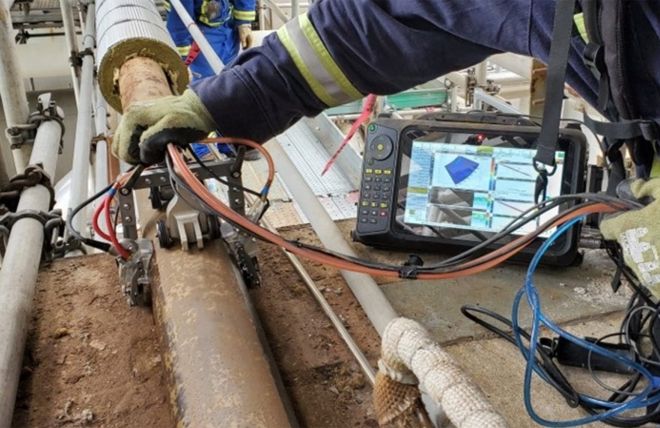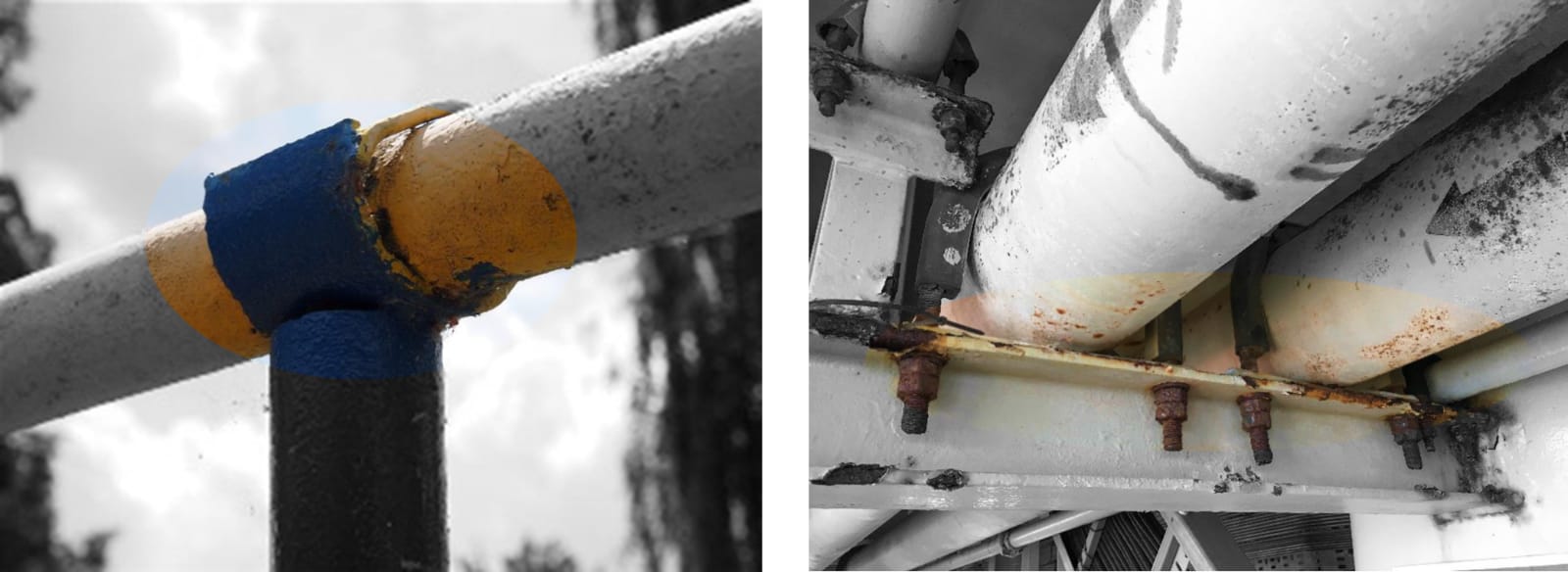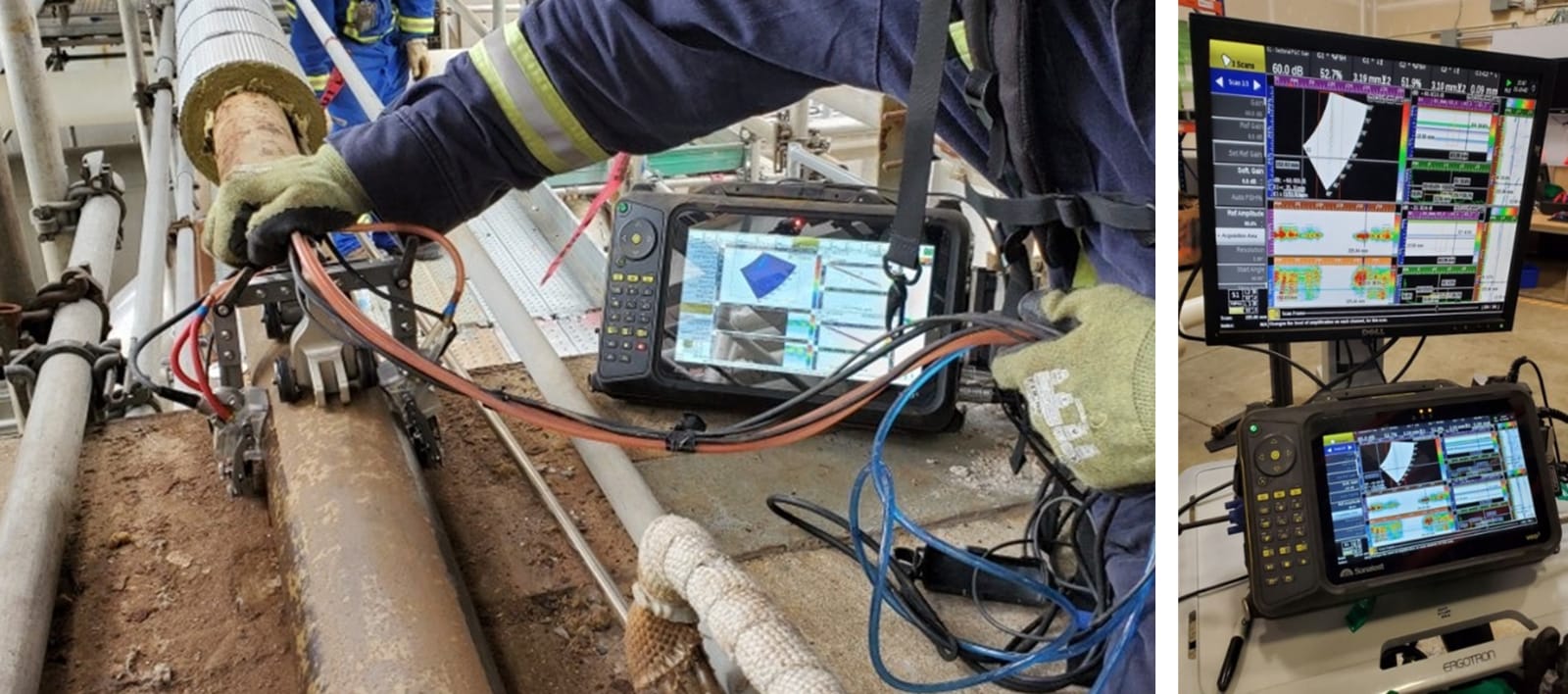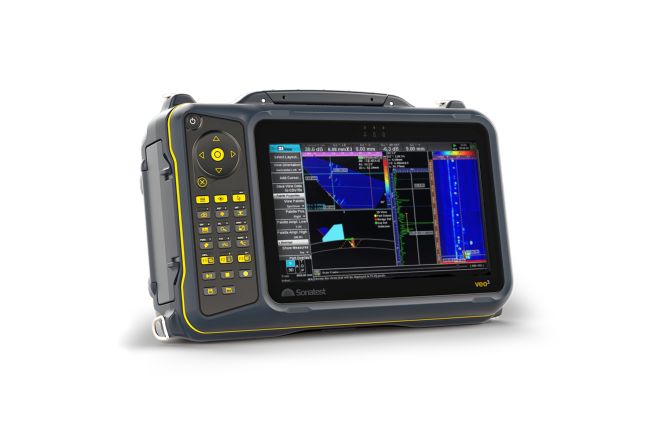
Corrosion under pipe supports (CUPS), which is also known as touch point corrosion (TPC), occurs between a pipe and its supporting structure. The supports can be entrapment areas for water. Furthermore, poorly mounted attachments can lead to movement of the pipe within the support. Both factors can lead to the wearing away of the protective coating and corrosion to the external surface of the pipe. It can also cause an eventual failure of the pipe if not detected early enough.

Figure 1 – Examples of corrosion in pipeline support locations
The Challenge
The location of CUPS damage, by its very nature, can be hard to spot and even more difficult to inspect. Visual inspection may spot the corrosion, but wall loss and overall areas may remain unknown. Extreme solutions include raising the pipe above or sideways off the support to allow for direct assessment of the corroded area, requiring shutdown of the line and expensive equipment. This approach could cause further damage to the line in the process.

Figure 2 – PA-CATTM being carried out on site, with scanned results appearing on VEO3
Several ultrasonic solutions are available to accurately and reliably measure the wall loss of CUPS. The following describes PA-CATTM, a patented technique developed by Holloway NDT & Engineering Inc.
The Solution
PA-CATTM is a technique and analysis process that uses standard phased-array instruments, transducers, wedges, and scanners to accurately detect and measure CUPS on piping. It is applicable on ≥2” (50.8mm) diameter pipes with thicknesses between 0.153” - 0.625” (5 - 16mm). It can be performed in the axial or circumferential directions of the pipe to cover all eventualities.
The PAUT data is fed into the PA-CAT analysis algorithm to produce a cross-sectional profile of the corrosion hidden by the support.


Figure 3 – PA-CATTM Results compared to a laser scan set of results
All equipment can be acquired through Sonatest Ltd., and the analysis license can be acquired through www.pa-cat.ca. Further information can be found in this Solution Note.
Please contact our Applications Team if you have any questions. You can also find more solutions on our website.
To follow further content and our newsletter, please contact us and check “Add to mailing list”.
Related Products

